One of the busiest demonstrations at the Port Townsend Wooden Boat Festival—when it is not hampered by a pandemic—is the Edensaw Boatbuilding Challenge. Boatbuilding contests aren’t new to wooden boat festivals; in their early incarnations they were for amusement and not really about boatbuilding. Some of those early events were sponsored by the maker of an adhesive caulking and the boats, built “quick and dirty,” reliably offered plenty of poor joinery to showcase the remarkable capability of the company’s product. The less likely they were to float, the more interest they drew and the grand finale, a short race under oar, paddle or sail, was often the first and only times the boats were used.
In 2013, Edensaw’s Boatbuilding Challenge shifted the focus of the contest to creditable boatbuilding. The company specializes in high-quality lumber and plywood for marine use, so it would make good sense that the boats built under their banner wouldn’t be disposable. And, while the launching of seaworthy boats may not generate the train-wreck fascination of the good old days, festival goers could learn a thing or two as the boats were being built and admire the craftsmanship of some talented, albeit rushed, boatbuilders.
Jon Lee, of Everett, Washington, began building boats while he was in grad school training to become an engineer, and reviewed his Pocketship for Small Boats last spring. He doesn’t need much prodding to build yet another boat, so when his father, Bob, suggested they build a boat at the 2018 Boatbuilding Challenge, that was impetus enough for Jon to set the ball rolling. The Lees needed a design and two more builders to fill out their team. Being an engineer, Jon began with the math. The contest rules set the hours the teams could work: from 9 in the morning to 11 in the evening Friday and Saturday, and from 8 to 1 on Sunday. Those 33 hours times four builders gave a total of 132 man-hours, less the time for breaks and epoxy curing. Jon looked for a boat design that had more going for it than the right construction time. It would have to be sturdy, fun, useful, and attractive. The Lees knew their team would be up against some skilled boatbuilders, and decided they “needed something with extra character and charm.” They chose stitch-and-glue construction out of the same calculus of showmanship: “It is flashy and crowd-pleasing to have a boat-shaped object within a few hours of starting.”
Their criteria led them to Glen-L’s Tubby Tug. Glen-L calls their design #362 “a 9′ tugboat for kids of all ages.” Jon and Bob, noting that they fit the design’s target demographic, settled on the tug as the boat they’d build for the challenge. “Our reckoning was that the charming looks of the boat would go a long way toward winning the prize.”
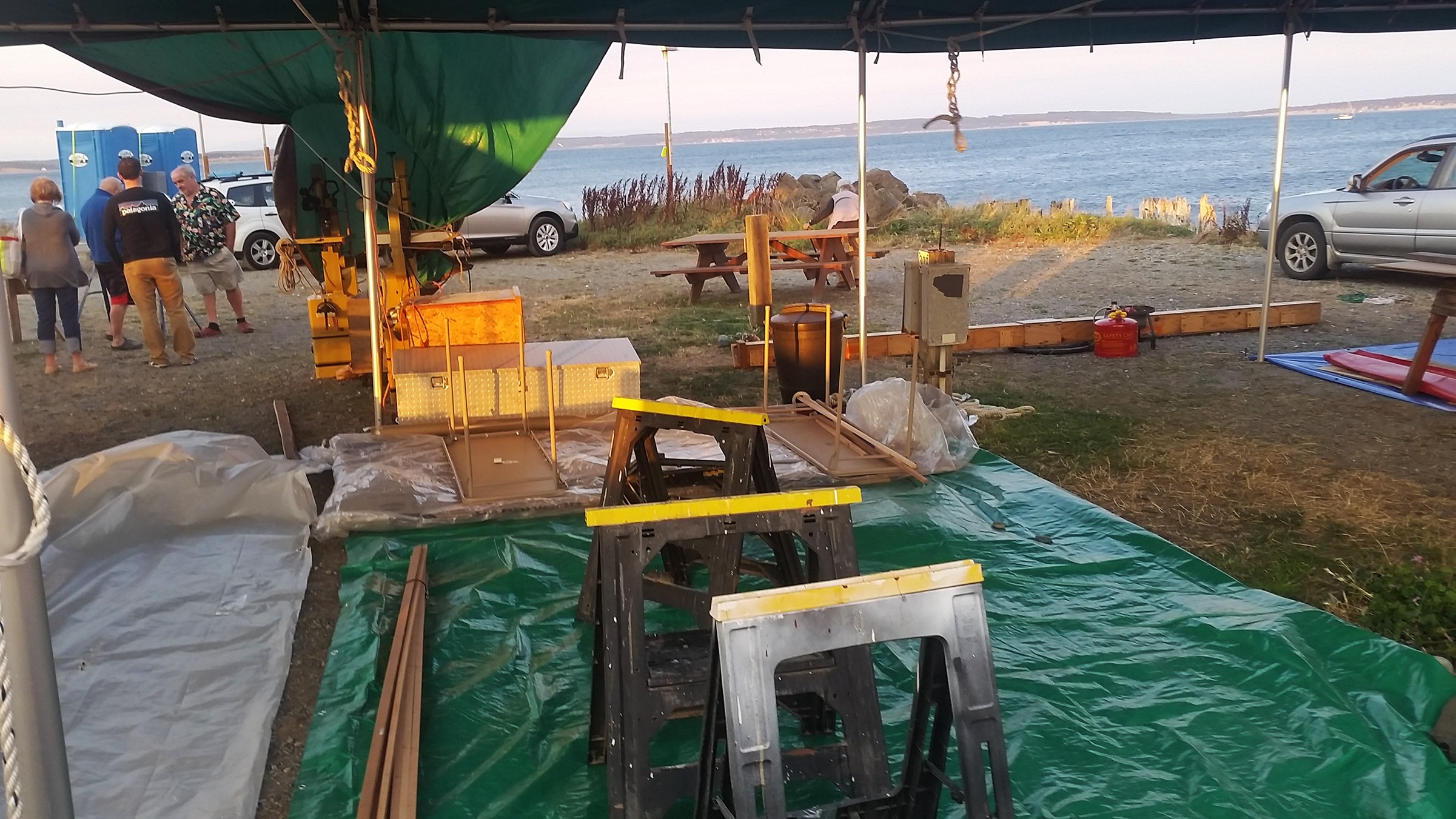 Photographs courtesy of Team Critical Path
Photographs courtesy of Team Critical PathThe work area was sheltered by a tent and each team had a 10′-wide space. To the north there was a nice view across Admiralty Inlet to Whidbey Island, but there wouldn’t be idle time to enjoy it.
The Lees gathered the rest of their team, Christopher Street and Ron Doll, with Ian Curtis subbing on Saturday when Ron had other obligations. The rules allow for some preparations before the start of the challenge, so the team marked their 10′ sheets of okoume plywood. There wouldn’t be time to paint the boat before the time was up, so they dyed the plywood red, green, and yellow so the bright colors would shine through the epoxy and fiberglass, a touch calculated to score points with the judges.
At 9 a.m. on Friday, the starting whistle trilled and the five teams, all sharing the shelter of a large tent, went to work. Critical Path, as the Lee-led team called itself, was flanked by some stiff competition: The Northwest School of Wooden Boatbuilding was to one side building a plywood pram, and a group of pros from Gig Harbor was on the other making a very bold move by building a carvel-planked rowing boat.
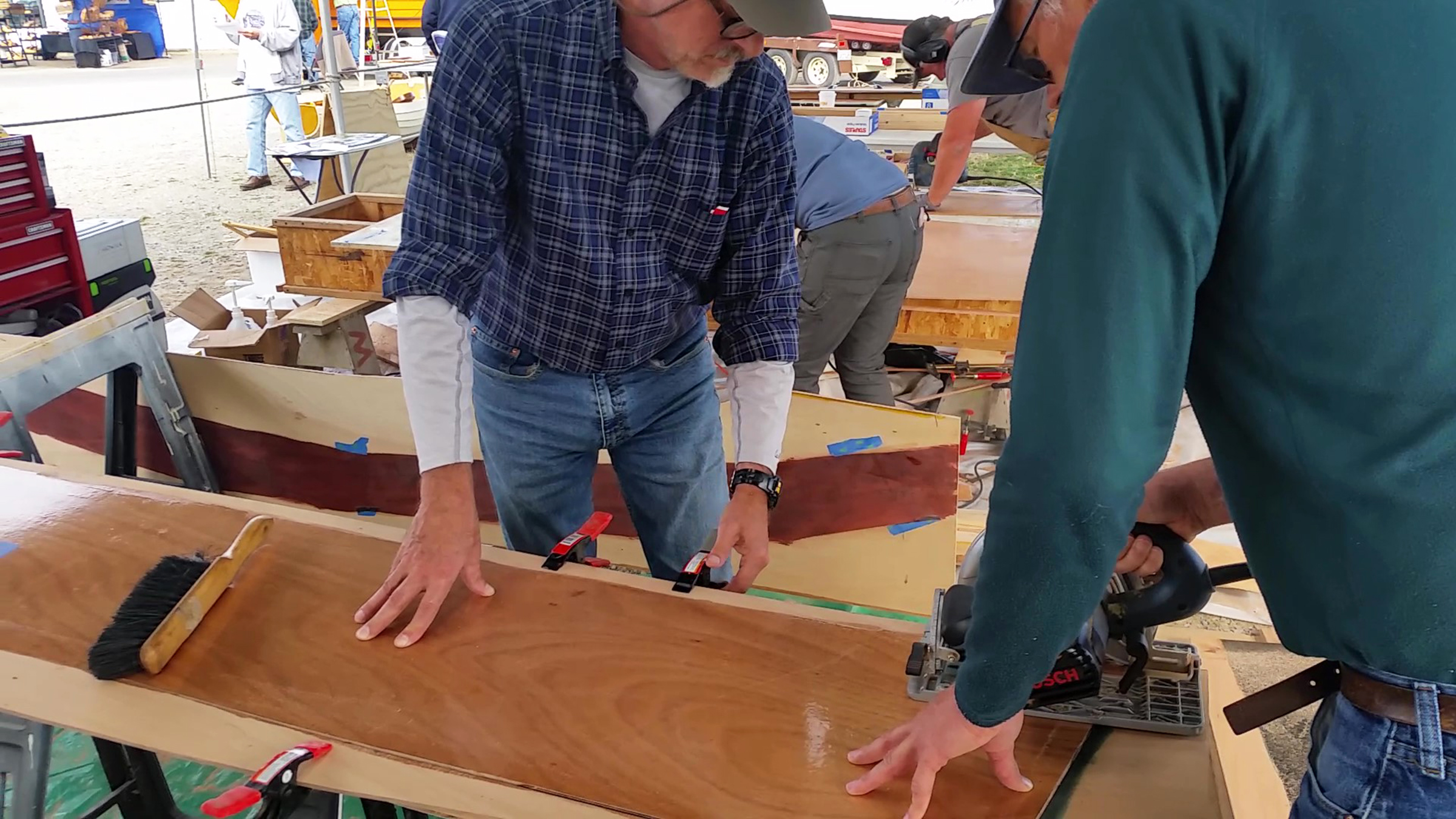
Under the rules, the plywood could be coated with epoxy prior to the start of the contest. The first day’s work began with sawing out the parts.
Jon had built a few boats and Ron had a kit kayak to his credit, but for the three other members of the team, the tug would be their first foray into boatbuilding. Jon carefully choreographed each step of their build around epoxy curing times. The hull would have to be finished that first day and ‘glassed by quitting time at 11 p.m. so it could be worked on the following day. The team often had four saws going all at once—circular saws cutting out the plywood pieces with their long sweeping curves and jig saws working the tight radiuses. Jon soon went to work with a drill making holes for the stitching part of the tug’s stitch-and-glue construction. The glue part was a risky departure from the norm of epoxy tack welds, which would simply take too much time to cure. Beads of thick super glue were applied to the joints instead and cured instantly with a spritz of accelerant. The wire stitching could then be removed, followed by epoxy filets and ‘glass tape. By lunchtime the hull was stitched together.
A reporter was interviewing Bob as Jon cut the wires holding the bow together. The super glue held until he cut the last wire and then the bow split open. He slapped the plywood ends back together and held tight as Ron and Chris quietly rushed to his aid and drilled new holes and installed new stitches. Bob kept the reporter at bay and she was none the wiser (and deprived of a scoop).
By evening, the hull was ready for fiberglass sheathing but, after taking a break for a late dinner, team Critical Path was spent. By missing this step in the schedule, the boat would only be shy a few finish coats of epoxy at the end.
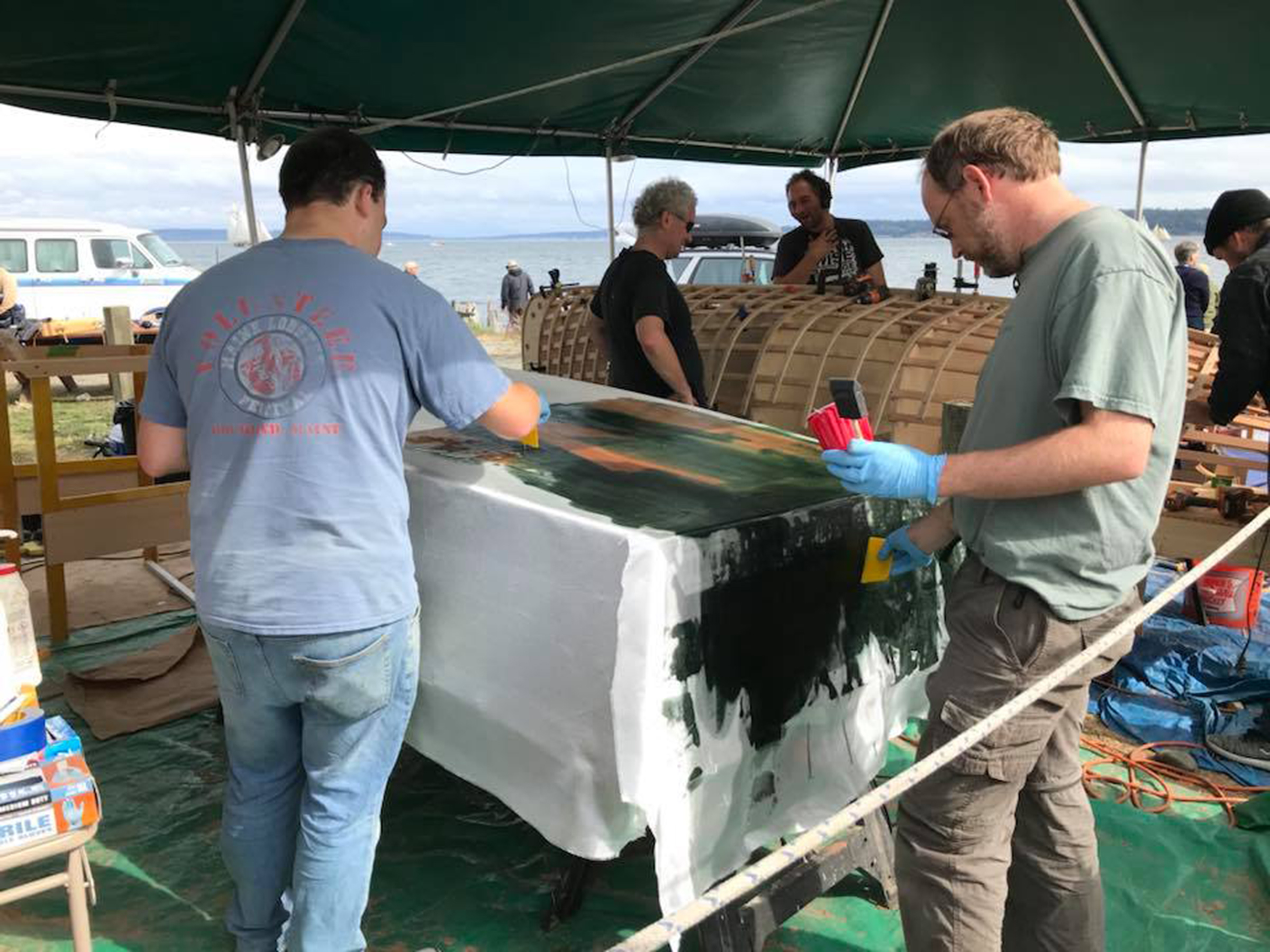
Fiberglassing the hull had been scheduled for the end of the first day, but it was a bridge too far. The second day started with applying epoxy to the ‘glass.
On Saturday morning, they were all feeling rather ragged. Bob and Chris worked on the pilothouse, and Jon worked with Ian—who was raring to go—on prepping the hull for sheathing with a coat of epoxy.
Shortly after lunch, it began to rain. Hard. The hull, still wet and set at the edge of the wall-less tent, was getting pelted with rain. The crew rushed to move the hull to the center of the tent. Jon was under the edge of the tent at the moment the wind dumped the water pooling on its roof right on his head. He was soaked, but it was good for a laugh all around. They kept working for a while before calling it a night.
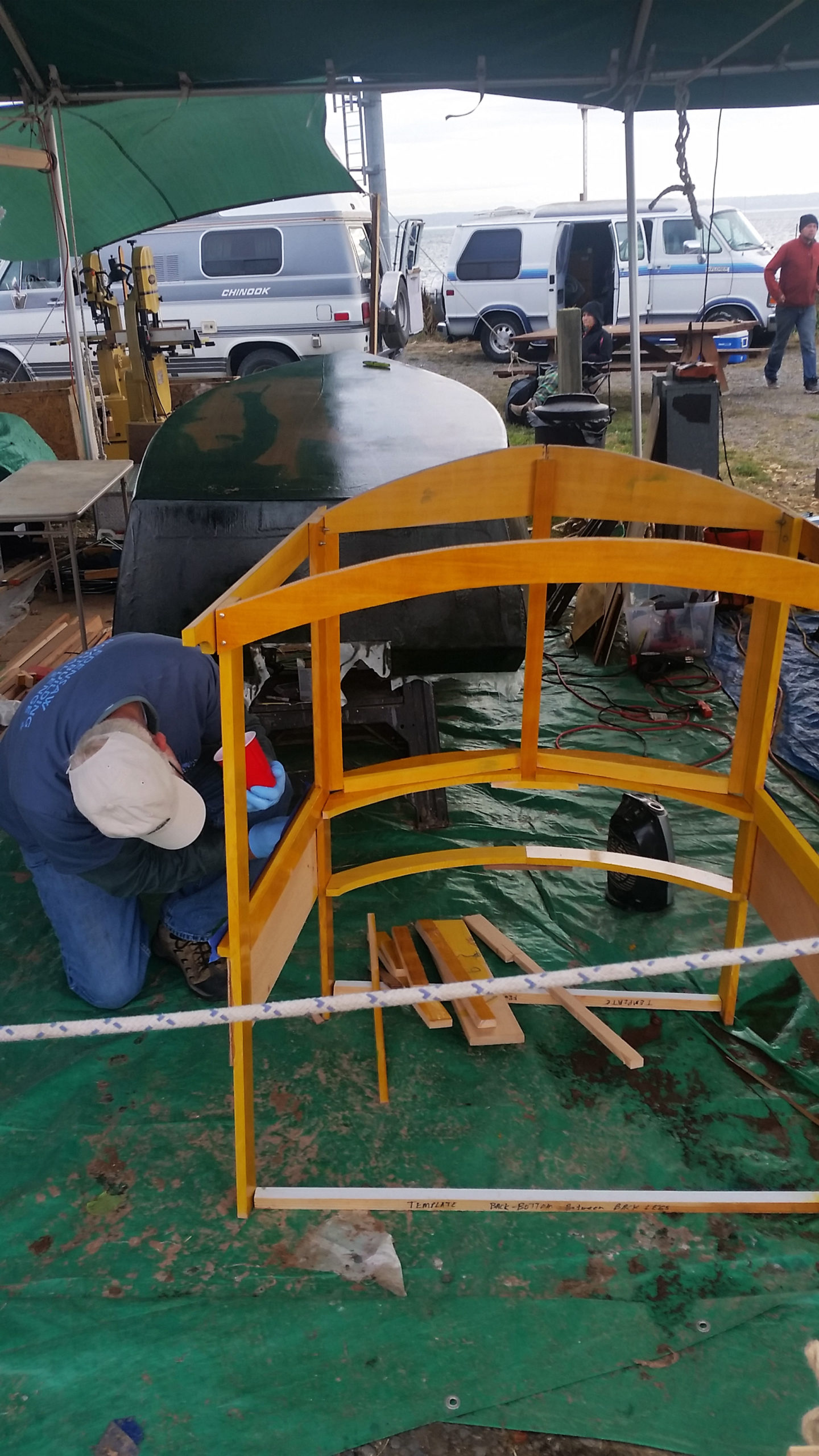
While the hull was being built in stitch-and-glue fashion, the pilothouse started with a timber framework that would support plywood panels.
On Sunday the hull was ready to be flipped upright, but the pilothouse was not coming together neatly, so some of its stitch-and-glue joinery was peppered with screws and brads. The most obvious flaws were covered by decorative pieces that Ron quickly designed, made, and applied.

Ron put some finishing touches on the pilothouse. He drummed up some of the decorative elements to hide flaws in the work.
The whistle signaling the end of the contest blew at 2 o’clock sharp, just as the boatbuilding school team finished adding a coat of latex house paint on their pram. Team Critical Path were done a little early, after adding all of the finishing touches they could think of. The Gig Harbor pros realized they had taken on more than they could manage with the carvel hull and threw in the towel the night before. The two other teams had finished a 20′ catamaran and a collapsible pram.

With the boatbuilding phase of the contest over, it was time to wheel the mini-tug to the launch ramp.
The four launch-ready boats were paraded to the ramp at the end of the marina in the middle of the festival grounds. The Tubby Tug was already getting a lot of attention and admiration. With the boat set in the water, Jon and Bob climbed aboard. The rules don’t allow motors, so they were armed with canoe paddles. Their efforts at paddling were no match for the breeze that was sifting through the marina and the tug bobbed and weaved between a pier and the rocks lining the marina’s banks. The catamaran took off like a shot and the collapsible pram actually rowed circles around the tug.
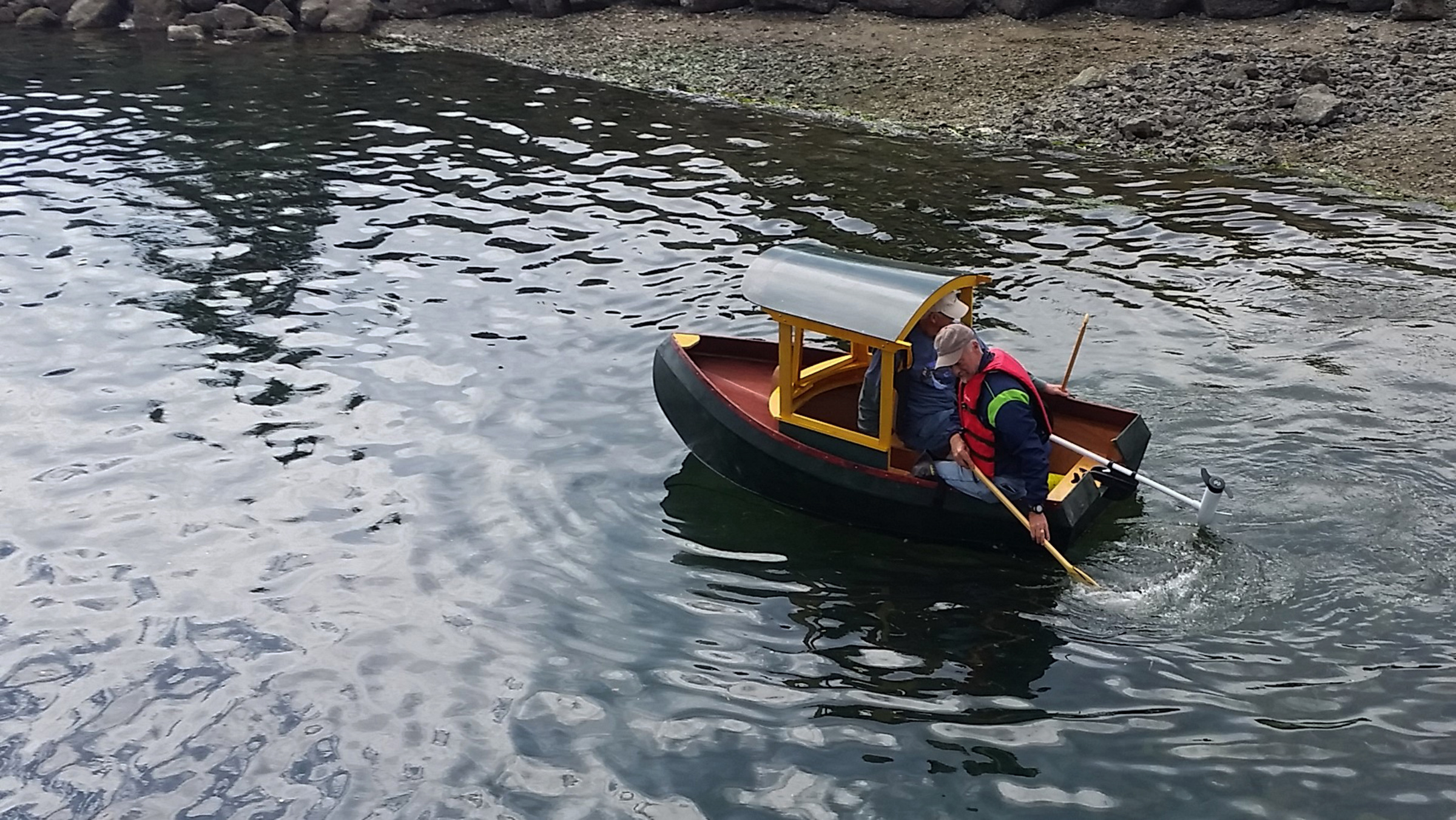
The contest rules didn’t allow the use of motors, so the electric outboard couldn’t be deployed. Canoe paddles supplied the legal auxiliary power.
The boatbuilding school’s pram, painted and equipped with oars and a sailing rig, took the top honors and the catamaran was awarded second place. The judges called third place a tie between the collapsible pram and the tug.

Team Critical Path lined up with the fruits of their labor: from left, Christopher Street, Ron Doll, Jon Lee, and Bob Lee. Ian Curtis, the Saturday reliever, wasn’t present for the Sunday launch.
Jon, Bob, Chris, Ron, and Ian were all pleased with their work. The Tubby Tug has a fair and sound hull. An electric outboard borrowed later that afternoon proved it could perform well with appropriate power. At the close of the festival, Bob took the boat home and in the weeks that followed rebuilt the pilothouse and gave the whole boat a proper finish. He rigged it for electric propulsion with controls and steering in the pilothouse.
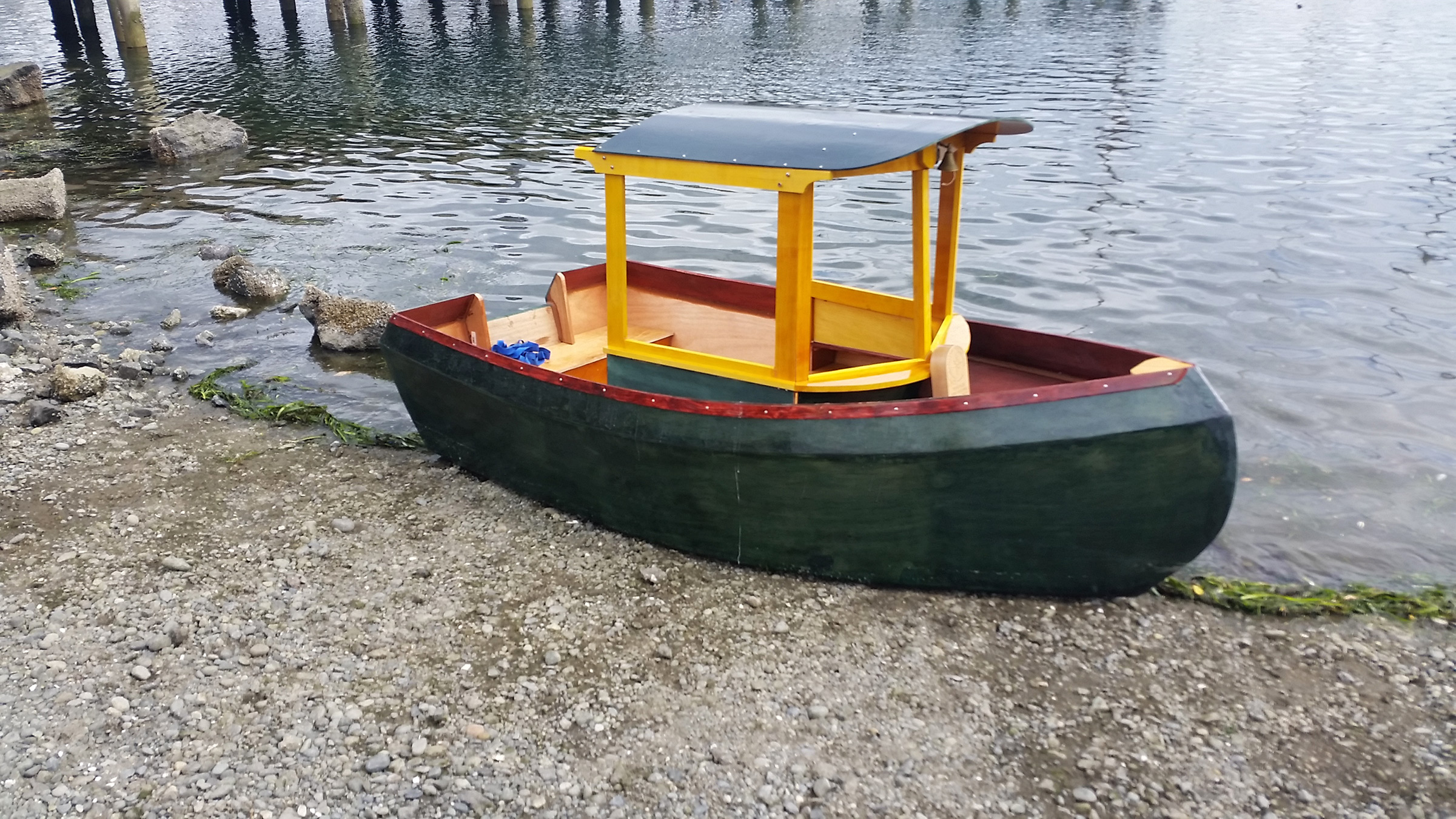
The Tubby Tug went home with Bob to get finished properly and used by the Lee family.
The Tubby Tug will have a useful life following the contest and be enjoyed by the extended Lee family. The tie for third place has already been turned into a win.![]()
Do you have a boat with an interesting story? Please email us. We’d like to hear about it and share it with other Small Boats Magazine readers.
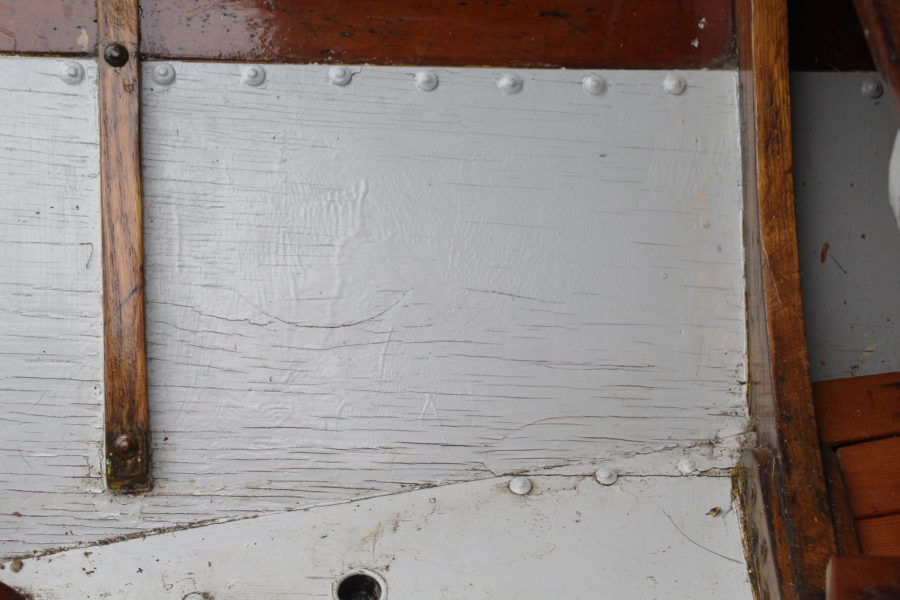
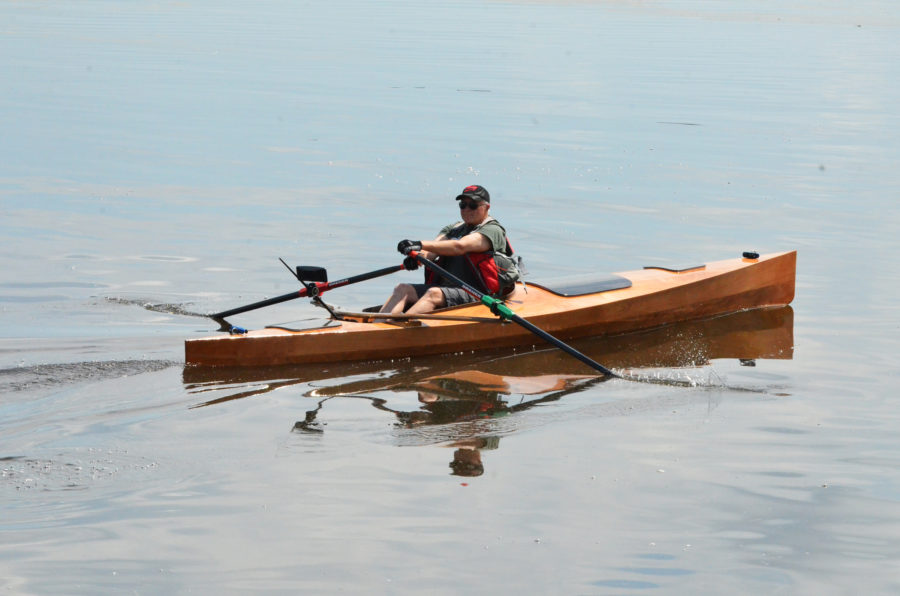
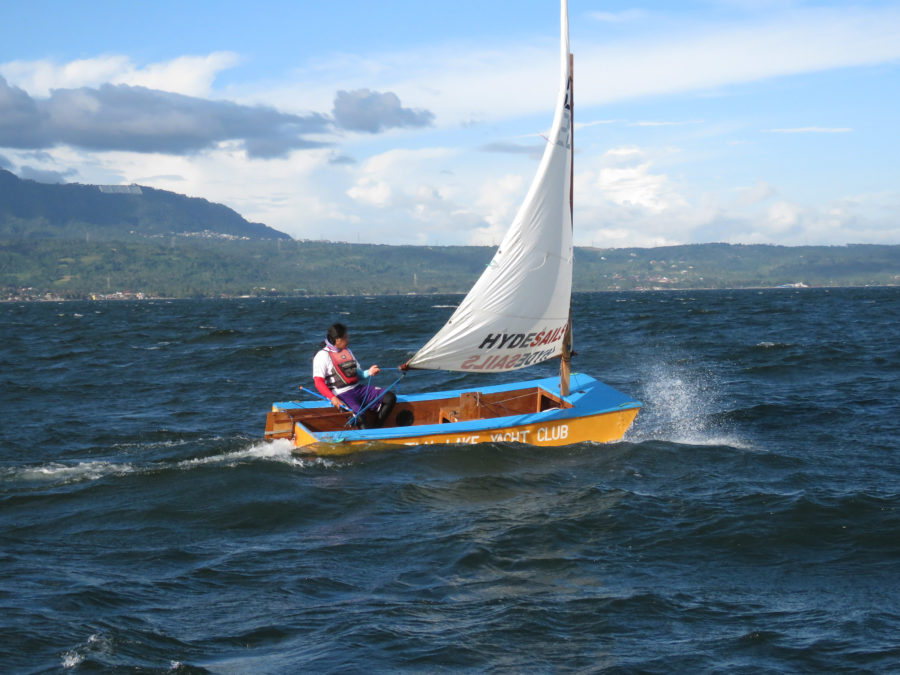

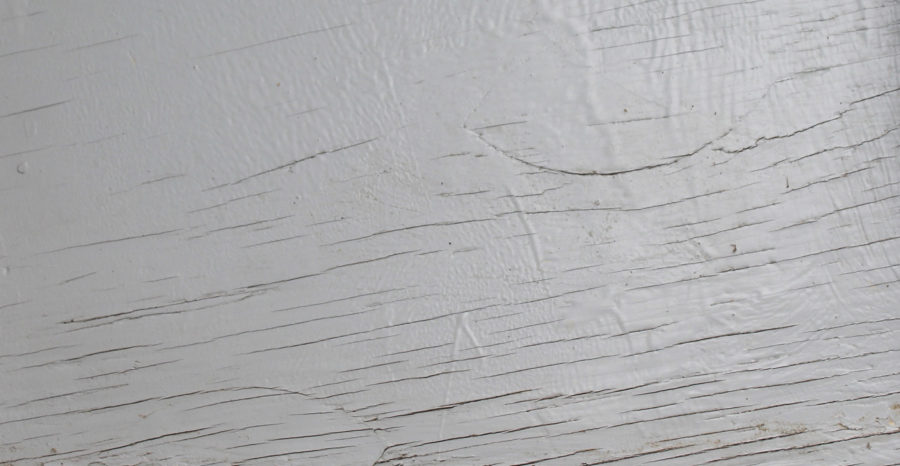
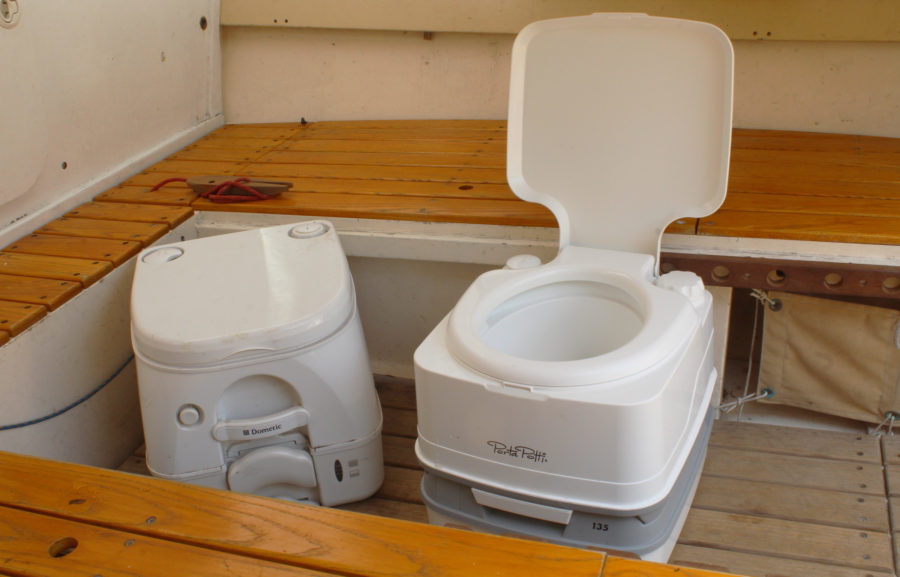
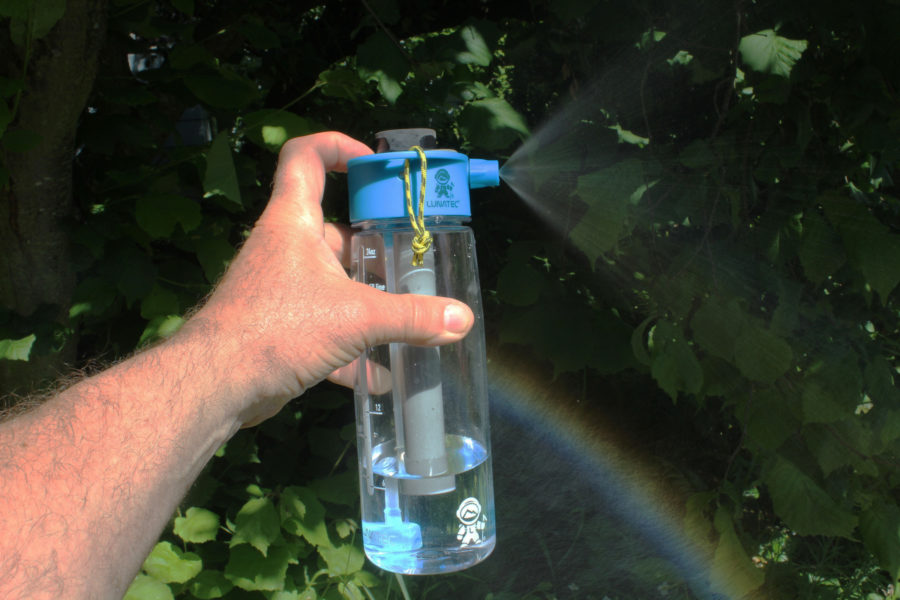
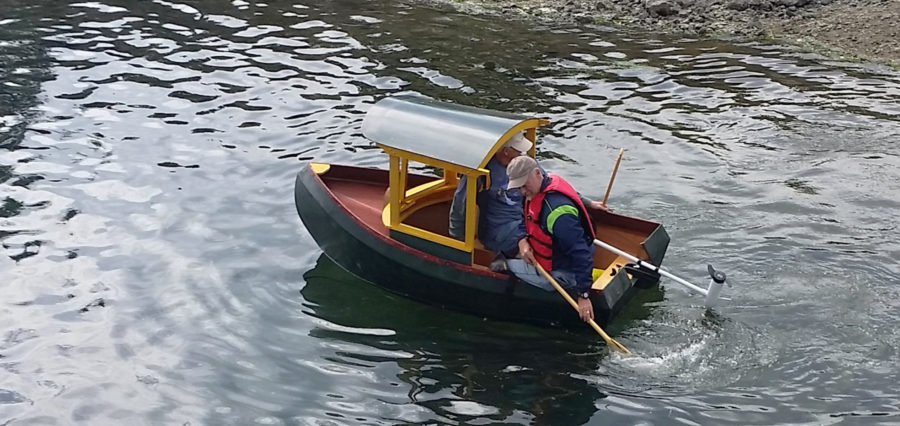
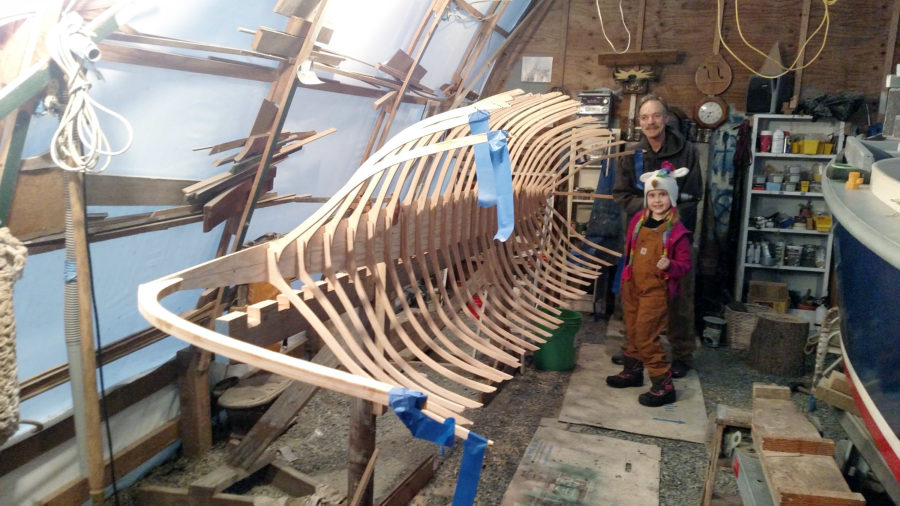
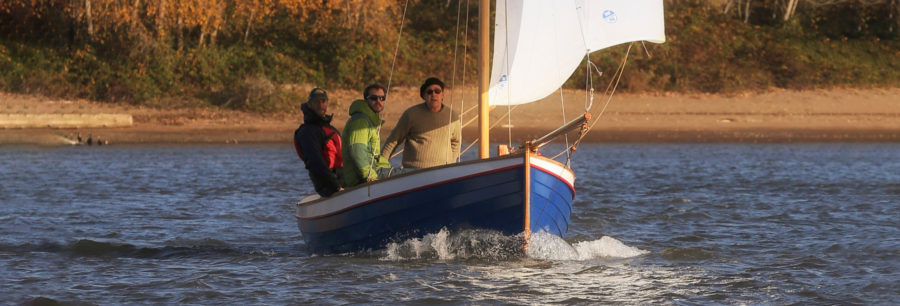
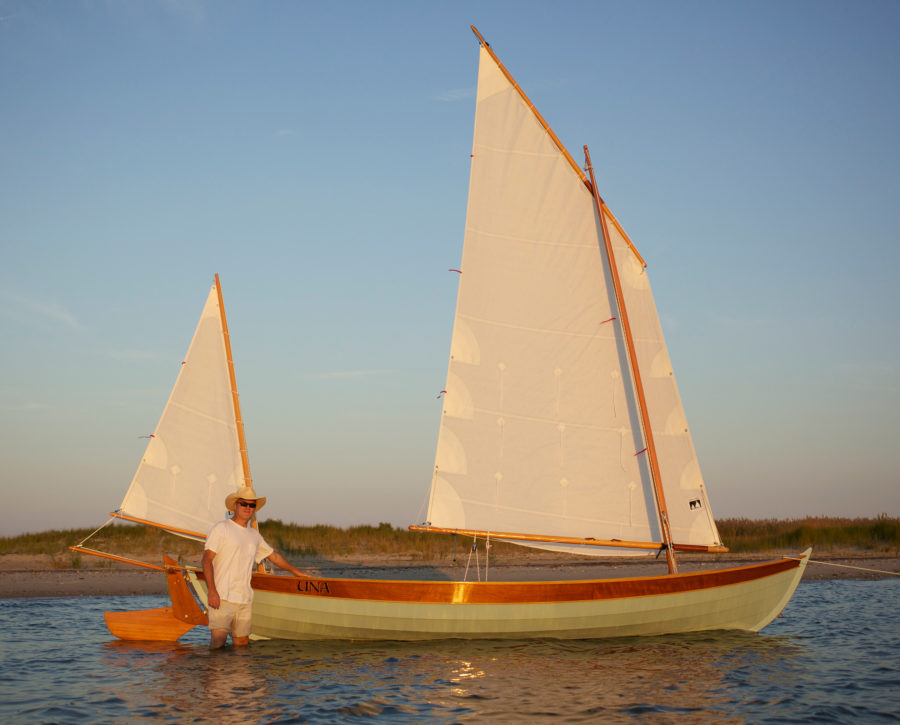
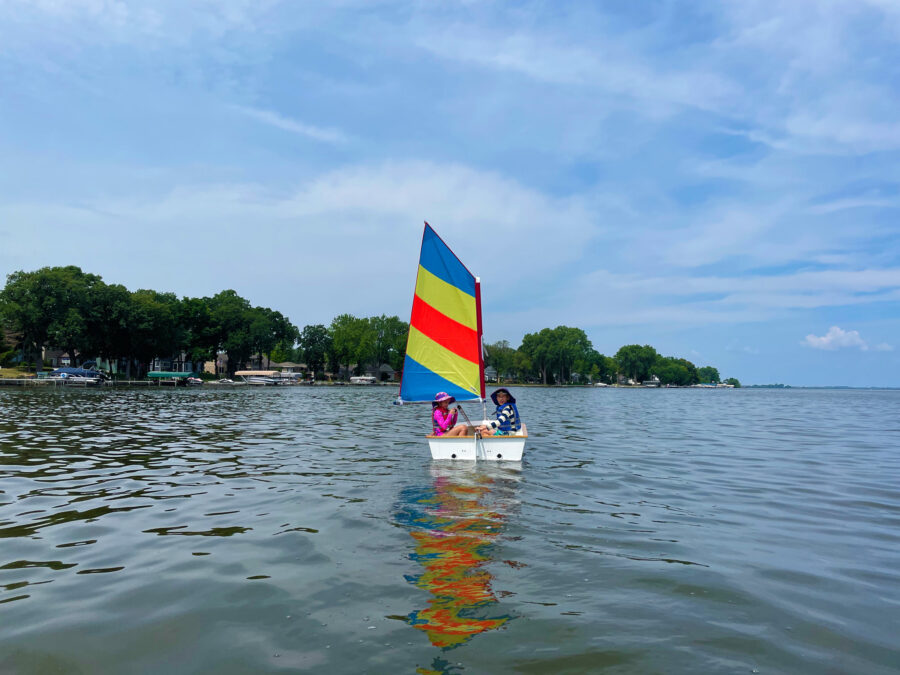
Great story and great job building!!!